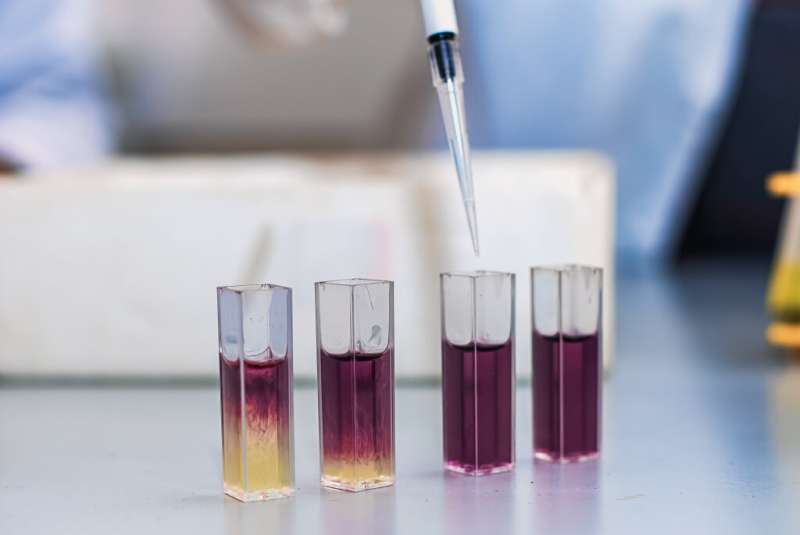Scientists study bacterial cells in the photo-emission spectrum

A team of Russian scientists working in cooperation with international colleagues used a new method combining visual microscopic observations and photoemission spectrum registration that can be used to create a map of the physical and chemical state of a cell surface. The team studied the cells of the colon bacillus Escherichia coli that are a promising material for the development of nature-like technologies. The study was supported with a grant of the Russian Science Foundation, and the article about it was published in the Results in Physics journal.
Nature-like object studies are an actively developing field of science based on the use of biological materials. Among other things, it includes technologies for the development of nanosized constructions on the basis of biological macromolecules: DNA, protein capsules and conjugators, and nucleoprotein complexes. However, to create such structures scientists need to understand how a biological system functions as a whole, and also to have technologies enabling such construction, composition and structural fine tuning.
One of the best subjects for the development of these technologies are the cells of the colon bacillus E. coli that can be easily cultivated in lab conditions. The bacteria produce ferritin-like proteins called Dps. One of their main functions in a cell is the accumulation of different iron compounds (of fixed shape and not more than 5 nm in size) inside the protein globule. Such molecules can be obtained using a long and relatively quite expensive method of extraction with different means of fractioning. Alternatively, the E. coli cells themselves can work as a factory for controlled production, formation, transportation, and distribution of these proteins with inorganic nuclei. However, the issues of physical and chemical state of iron compounds, as well as their local atomic and electronic constriction within the bacterial cells and on their surfaces remain open. Currently there are no universal direct experimental methods that are precise and chemically sensitive enough for the studies of microparticles on the surfaces of biological structures (e.g. cells).
A team of scientists from Voronezh State University together with their colleagues (including representatives of Immanuel Kant Baltic Federal University) were the first to study bacterial cells using the photo-emission electron microscopy (PEEM) method. It allowed the researchers to visually observe individual E. coli cells and potentially to study their surfaces' physical and chemical state. The team confirmed that PEEM was qualitatively applicable for this type of research.
"A team from Voronezh State University with the support of Russian Science Foundation used a set of high-resolution research methods including X-ray photoelectron spectroscopy and scanning electron microscopy that confirmed the efficiency of the approach used. The results shown by the group hold out a hope for a wider use of PEEM for the bioimaging of cell objects with integrated inorganic nanoparticles. In other words, PEEM can be used to map inorganic inclusions on the cell surface—that is, to gain information on what atoms and in what state are localized on the membrane of a bacterial cell at the microscopic scale. X-ray photo-electron spectroscopy technique was applied with the use of the National Research Center Kurchatov Institute storage ring synchrotron radiation," said the head of the project, Associate Professor Sergey Turishchev.
"In the future we plan to increase the resolving power of this approach in order to be able to obtain precise data about the surface of single cells or even specific areas on them. Moreover, we'd like to consider the application of this method not only to bacterial cells with quite resistant membranes, but also to eukaryotic cells," commented Sergey Antipov, Associate Professor and head of the Molecular Biophysics and Bionanotechnologies science group at the School of Life Sciences, Immanuel Kant Baltic Federal University.
More information: S.Yu. Turishchev et al, On the possibility of PhotoEmission Electron Microscopy for E. coli advanced studies, Results in Physics (2019). DOI: 10.1016/j.rinp.2019.102821
Provided by Immanuel Kant Baltic Federal University





















